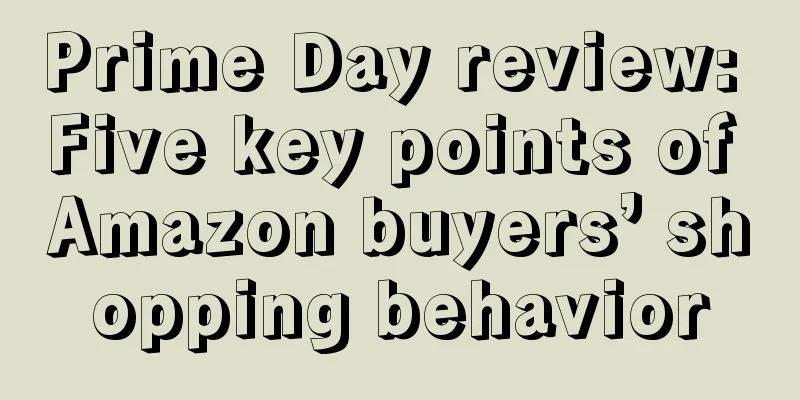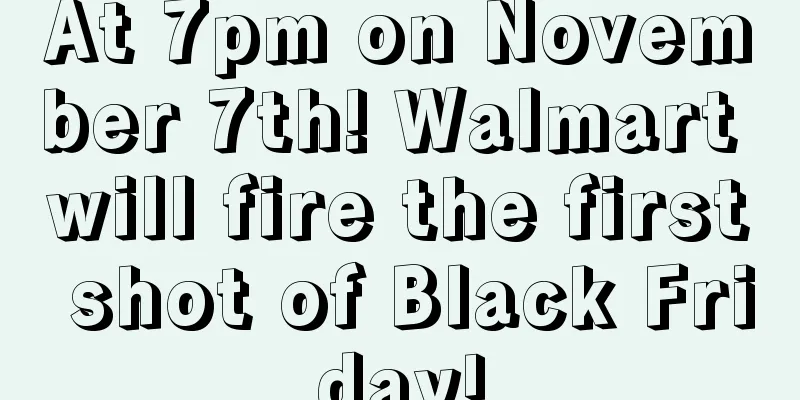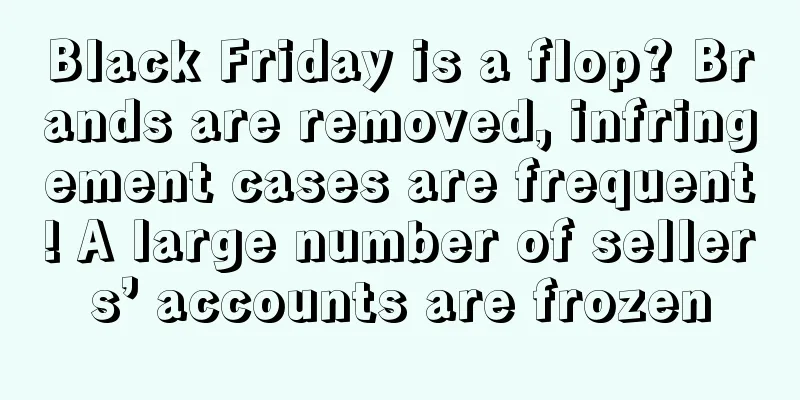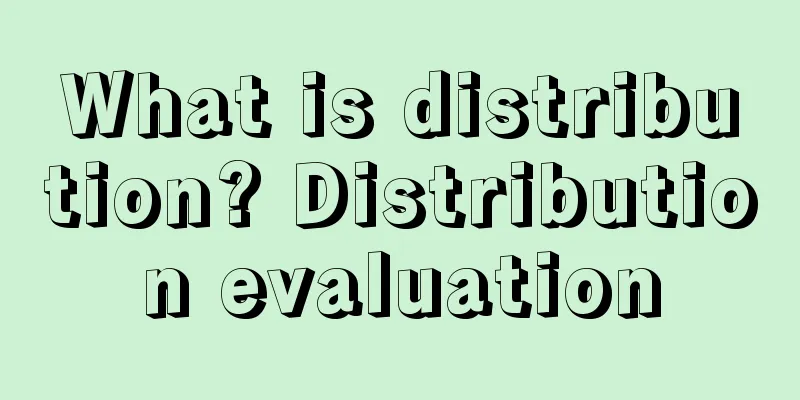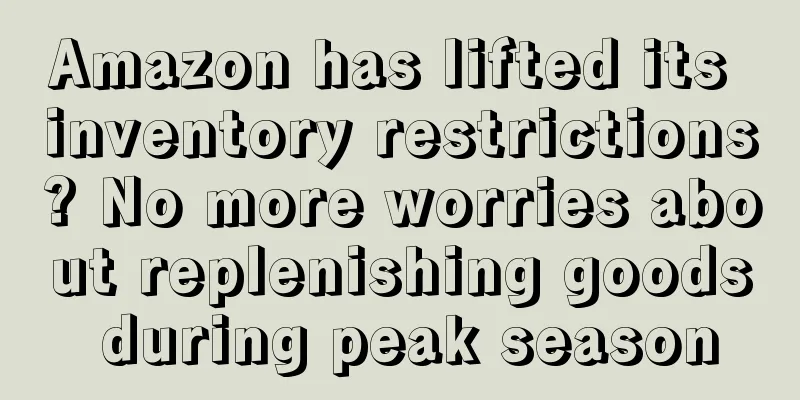|
Category: Outdoor tools, Standard product object: 3 ASINs, in 2 parent bodies, same subcategory, 5 points in the title are basically the same, but the quantity is different, and the rating is 4.6
asin No. 1, 10 pieces, in parent body 1 , price 13 dollars, launched in 2024, BS list No. 5, 500 comments, CPC 1.0 dollars, there is exposure, click and conversion asin2, 20 pieces, in parent 2, price 20 dollars, launched in 2025, BS list 90, comments 40, CPC 1.5 dollars, exposure, clicks and conversions asin No. 3 , 30 pieces per pack, in parent body 1 , price $30, launched in 2025, No. 5 on the BS list, 500 comments, CPC $2.4. The advertising data is very poor, with low exposure, low clicks, and 0 conversions.
Note: Available in packs of 10, 20, or 30. All competitors are selling them and have sufficient quantity.
Here is an example of an office tool: eraser . It is similar to the category I work on. They are all standard products, necessities, consumables, and different quantities. There is one core word with high traffic, and many long-tail words with prefixes and suffixes of the core words. The difference is that there is only one Amazon self-operated outdoor product.
Predict the same customer behavior: search for erasers and erasers for drawing, erasers for pencils, erasers for school, etc. No one will specifically search for erasers in several packs.
Approximate search terms
Please feel free to use the front-end client link .
6 low quantity packages links
Target 72 large quantity installation links
Replace my category with the eraser category, and here comes the problem: They are all in the same category, with the same title, five points, and similar advertising methods.
I also sell the link for the larger quantity (size 3) of 72.
Why is the effect of the 72-pack large quantity (No. 3) ad so poor? Even with a high CPC , there is not much exposure? They are all in the same category, why don’t they get exposure? I can’t figure it out?
Link 3 is merged into Link 1, and has the same comments as Link 1. The title and 5 points are the same. It stands to reason that there is no problem with the link base of Link 3. The category CPC has not increased this year, as evidenced by the old Link 1 and the new Link 2.
I was full of hope for link No. 3. I thought that since there were comments on the old link No. 1, it should have conversions. But the CPC and exposure clicks of the ad hit me hard . The bidding is already very high, and there are no exposure clicks, let alone conversions. Please help me, everyone. Thank you very much.
Pluto of Eleven Agree with: Work hard silently, a2515713, B111ue, 小萌新6657, Yeeyo611611 more » There is not much known information, so I can only think about it based on a pet product I made before, for reference only <br>Parent No. 1: Child has two SKUs: 10-pack and 30-pack Parent No. 2: Child has 20-pack or other (single link)
Generally, increasing the number of products is basically to expand the profit margin of ASIN. By packing more ASIN, you can save the order FBA delivery fee and increase the overall profit. This is a common operating concept. Currently, the advertising and conversion of 30 packs are poor. You have to analyze the audience from the perspective of the product itself. Advertising is just a tool, and product links are the foundation.
1. Pricing strategy and display method
The pricing is not very different : the price of a pack of 30 is $30 (that is, $1 each), which is not very advantageous compared to ASIN No. 1 (unit price of $1.3). The price anchor of 10 packs makes the price comparison advantage of 30 packs not prominent enough . Moreover, these two price ranges correspond to different market positioning - one is the product range below $15, and the other is the range above $30. Copying the advertising strategy of low customer unit price will definitely not work.
Comparative thinking in the same category: We can analyze the top 30 sellers in the same category. If many competitors use multiple variants to increase the number of products and merge SKUs instead of establishing 30-pack ASINs separately, then their parent sales display interface must use the child with the least number and lowest price as the first display page (without unique brand promotion, private domain traffic, and product advantages that stand out from the same category, it is difficult to create a multiple gap in the product price system)
2. Customer psychology and target customers <br>Customer needs: A large number of products with a unit price of $30 are not suitable for all customers, especially first-time buyers. Customer purchasing behavior can be understood as: I may be willing to spend $13 to buy a cup of Luckin Coffee, but I may not be willing to spend $30 to buy three coupons first, because I don’t know whether I want to drink Luckin or Nayuki (brand, product) next time, or I don’t have enough budget to plan the next consumption.
Target customers: The target group of high-volume SKUs should be repeat customers or customers with sufficient budgets, who are already familiar with the product or plan to continue purchasing it in the future and have memories of using or purchasing it. Such customers will purchase a 10-pack SKU as their first experience, or directly choose a 30-pack by calculating the price average.
Personal advertising adjustment ideas <br>Increase exposure of 10-packs: When the conversion rate of 30-pack SKU ads is not ideal, you can divert customers by exposing other sub-packs of 10-packs. By attracting customers to click on the 10-pack through ads, some customers will choose to buy smaller packages due to budget constraints or the need to buy for the first time, while customers with a certain budget will switch to the 30-pack. With the diversion of customers from 10-packs to 30-packs, profits will increase while increasing advertising budgets and exposure, which will ultimately increase the overall parent order volume and gradually improve the brand's market share and category ranking.
By increasing the exposure of 10 more ads, optimizing ads and using multiple variants, the sales and market share of the 30-pack can be increased. Subsequent strategies such as BD (flash sales) can be used to further expand the price comparison of the 30 ASINs, divert customers to convert orders for large-package SKUs, and increase natural traffic. Anonymous User • Shenzhen In fact, I have already prepared for the unsatisfactory conversion rate, after all, the average order value is high. Now the exposure and clicks are not much, let alone the conversion. I agree with the idea of adjustment, and I also use the traffic of 10 to bring traffic to 30, which is also the purpose and plan of adding 30 packages. But other sellers' 30, they will run ads and have ad space, and have 300-500 sales per month, which makes people drool.
So I decided to run separate ads for 30 of them. However, CPC, exposure, and clicks, these three data shocked me. They are all in the same category, and the CPC-exposure-------the difference between 10, 20, and 30 is too big? ! ! ! High CPC and low exposure are the root of the difficulty in understanding. If I could get 30 packages with a CPC of 1.5, 100 clicks, and 10 orders, I would accept it. Now, the CPC of 30 packages is 2.4, which means less exposure, fewer clicks, and no conversion data. I want to vomit blood.
Pluto of 11 • Shenzhen @Anonymous user If you follow the latest reply, take the eraser as an example, the eraser is a standard product, that is to say, the traffic layout conversion-core keywords you can do are only three to five, and these three to five core keywords account for 80% or more of your category traffic. In this case, exposure, clicks, and conversions must be considered and analyzed one by one. According to what you said, the CPC is high, the clicks are few, and there is no conversion.
Well, first understand the high CPC problem. Since the words you typed are recommended through 10 packs, that is, currently these core words are only 10 of yours that can get orders on the homepage, and the rest of the orders, exposure, and conversions are all OK. Back to itself, when your sales sub-ASIN is regarded as a new ASIN (just merge the old ASIN to get some good reviews + the old ASIN carries traffic to trigger natural orders), your recommended CPC is naturally higher than the CPC of the old ASIN that has already been ordered. Secondly, while it is high, it may not be on the homepage, because this core keyword has not been sold many times in your 30 sub-packs, so you can only get conversions by continuously increasing CPC to get a more forward position.
Low exposure. Generally speaking, SP ads are divided into three positions: home page, other pages, and product pages. The home page has the best conversion rate - the highest CPC, and the other pages are second. Product pages have low conversion rates due to low CPC and high exposure. Conversion, first of all, excluding the problem of wrong keywords, then there are three problems: high bidding and low exposure, and low clicks due to low budget.
Personal advertising strategy: The exposure of 10 products is already the most valuable (highest cost performance), so I have to get some repeated exposure and certain high-value customers by advertising 30 products. I will not use core keywords for the time being, because the homepage and the rest cannot directly compete with products with low customer price (quantity products). I will try to automatically and closely capture some long-tail words of core keywords. After obtaining a certain number of conversions (advertising transactions), I will extend to use core keywords, but not the homepage position, but the rest positions, to increase exposure first. Under a certain budget, give priority to increasing the so-called clicks and exposure. In this case, your overall ASIN order rate can be guaranteed, because high-priced clicks will also buy low-priced ones as an attempt.
When your average order value is higher than the market gap (benchmarked against FBA-Chinese sellers' median price but without direct appearance and functional advantages), your ads must not use brute force to target core keywords. You need to increase traffic word collection in a step-by-step manner, increase the budget to block a word and first reach the average conversion rate of the basic market, or try SBV-video-casting to the brand flagship store or ASIN, so that customers can jump out and increase your advantage. The above is purely random thoughts and is for reference only.
diudiunan • Czech Republic I think that for the 30-pack erasers, I would use some small words: large package erasers, erasers wholesale. This kind of targeted words, with a more favorable price, can gradually increase the number of orders first.
Anonymous User • Shenzhen @Eleven's Pluto: Thanks
Anonymous User • Shenzhen @diudiunan: I want to, but this keyword has already been occupied by someone, and the traffic is extremely small
I love eating potatoes • Shiyan The analysis is very good. I also agree that you should not use big words in the current 30 packages. Use long-tail words or phrases with high matching degree, and open a group of competing ASINs for delivery (only downward delivery)
Small vegetables Agree from: Bai Yueguang SSS Category: Outdoor tools, Standard product object: 3 ASINs, in 2 parent bodies, same subcategory, 5 points of the title are basically the same, but the quantity is different, and the rating is 4.6
asin No. 1, 10 pieces, in parent body 1, price 13 dollars, launched in 2024, BS list No. 5, 500 comments, CPC 1.0 dollars, there is exposure, click and conversion
asin2, 20 pieces, in parent 2, price 20 dollars, launched in 2025, BS list 90, comments 40, CPC 1.5 dollars, exposure, clicks and conversions asin No. 3, 30 pieces per pack, in parent body 1, price $30, launched in 2025, No. 5 on the BS list, 500 comments, CPC $2.4. The advertising data is very poor, with low exposure, low clicks, and 0 conversions.
First of all, let me make it clear that your No. 1 and No. 3 are in the same parent body, and No. 1 is BS No. 5. If you want to use the same word, the cost will be much higher, and you will compete with No. 1 for position, because Amazon will only display one font under the parent body for the same keyword in the same position. In other words, No. 1 and No. 3 are in a competitive relationship under the same keyword. If your No. 1 always has money, No. 3 will not have any exposure. My situation is basically like this, so if I want to advertise in different fonts under one of my parent bodies, I will give different words. It is generally not recommended to use them all. If you want to use No. 3 for profit, just wait for No. 1 to bring you traffic.
Then, how to avoid this problem? First, change other words; second, change other advertising methods, such as SB SD, etc.
Finally, the advertising data of No. 3 is very poor, with a conversion rate of 0. You need to see how many data there are, and then look at the natural conversion rate of No. 3. The market generally has a main push model, and if the other numbers are not the most acceptable to the market, it is normal for the conversion rate to fluctuate.
Smart Egg Agree from: hngzlyl The biggest influencing factor is that customers don't need that many units. The difference between 10 and 30 is a bit big. If the conversion of 20 units is OK, but 30 units is not, then it has exceeded the average demand. Other sellers' 30 units have a sales volume of 300-500 units per month. Can this be regarded as your ceiling under this quantity? The market capacity of the ceiling is already small. Unless your price is much lower than theirs, it is difficult to promote it with small demand, and the creation cycle will definitely be longer.
The market capacity of 10-packs must be much larger. Take the two links of erasers you mentioned. The monthly sales of small-quantity packs are more than 8,000, while the monthly sales of large-quantity packs are only more than 200. From the price point of view, the average price of a 6-pack is much higher than that of a 72-pack. The 72-pack has a price advantage, but why is it not as good as the 6-pack? Because not so many people need that many erasers.
Similarly, you need to analyze whether your quantity combination is what customers need based on your actual products. If you are satisfied with the monthly sales of 300-500 units of your competitors, you should also consider whether it is difficult for others to promote it and what methods they used to promote it, rather than comparing it with your own 10 packs. The target audience is definitely different.
Anonymous user Agree with: Broccoli, broccoli, Cindy4bestseller, a1543763235, Yawn Xiaoyu 3 is in the variation of 1. This results in only one ad space on the first page. Your 1 has a low price, many orders, and a high weight. Even if the CPC bid is low, but the weight is high, your 1 will naturally be displayed first. This results in 3 having to wait until the 1 ad is used up before it can be put on the homepage. Then your 3 ad will appear on the second page with a lot of traffic clicks. The conversion rate of the second page traffic is definitely much lower after being intercepted by the first page. Yours is still a high number, and it is very high if you only compare the price instead of the number. The people in need are more precise. Most people buy on the first page. The traffic you can capture on the second page is very small.
The solution is either to split 3 out and do it separately, or to lower the advertising budget of 1 to make way for 3. But the cost is likely to be a significant drop in ranking due to the reduction of advertising in 1.
A little cat · Shenzhen Naturally, your 1st ad will be displayed first. This means that 3rd ad will have to wait until 1st ad is used up before it can be put on the homepage. Then your 3rd ad will appear on the second page with a lot of traffic and clicks. Hi, I have some doubts about this. Poster 3 is advertising alone. How can it be affected by 1st ad? Aren't different ads independent of each other?
Random Name • United States @一只小八喵: Dear, this is a very simple question. I suggest you think about it carefully.
Anonymous User • United States @一只小八喵: There is a logic to advertising. On the same page, only one ad slot can appear for the same variant. It is useless to separate the ad groups because you are still in that variant. So you can only appear on the second page at most. Or you can't appear at all and can only wait until the first one is burned out.
1easter • Guangzhou @一只小八喵: The same parent body and the same ad slot type on the same page can only get one ad slot
Anonymous User • United States @一只小八喵: There is something wrong with the description. It is not the same variant. It is a variant of the same parent. In the case of the same page, only one ad space can appear
1easter • Guangzhou @一只小八喵: Results, Trending now, More results are the types of ad slots.
Beware the Big Shark • Hong Kong @一只小八喵: The problem with ad placement is that if the top seller has all ads in the sub-items, then the entire page will be filled with his products. This is too bad for the user's purchasing experience. So Amazon's mechanism is that in the same page ad position, the parent item only displays one of the best products overall.
Anonymous user This is my first reply to a question, please correct me if there is anything wrong.
A: "asin No. 3, 30 packs, in parent body 1, price $30, launched in 2025, No. 5 on the BS list, 500 comments, CPC $2.4. The advertising data is very poor, with low exposure, low clicks, and 0 conversions." Regarding this issue, you can clear the cookies on the web page, click on your details page to see what competitors are on your details page, try to add to cart, and see what competitors are on the add to cart page, what types of competitors they are, and whether the competitors have a strong advantage over your links, resulting in your conversions being 0.
B: I have another question about the advertising data. Your description is too general. Do the words in No. 1 and No. 3 match the same word? Are they in the same campaign and group? If they are in the same campaign and group, the better sub-body will be displayed first.
Anonymous User • Shenzhen A. The key problem: it is not conversion, but exposure, high CPC, but it is not enough to expose. B. Different advertising activities, basically the same advertising model, because I promoted the No. 1 link, I have experience in this category, what keywords, how much bidding, this is also the reason why I am confused, the No. 3 link is completely different from the No. 1 link, I doubt my life. I am looking at the answers of the big guys in the comment area, and I am still trying.
La la la woo woo Agree with: Hao, very white Dabai We only analyze that CPC has doubled, but we still need to analyze why it has doubled. For example, someone answered before that because the old product's ad space on the homepage of the keyword is stable, the ad space of the newly opened 30P product is sent to the second page. This may be the reason for the increase in CPC and the overall poor performance. There should be some distinction in the advertising keywords, or it may be that the current product directly opens ads without any historical sales. If possible, maybe closing the 30P ad, using 10P to attract traffic to improve the conversion rate of this sub-30P sub-body, and then reopening the ad will have a better effect
Anonymous user Agree with: Dahao wants to eat hot pot, wants to retire It is difficult to analyze when there are no competing products.
If the CPC has doubled and the exposure is still low, check the position of ASIN3 on the front-end search page to see if it still has an advantage over the products on the same page. If not, reconsider the advertising strategy and don’t stick to the old routine. Although the three ASINs have the same title and five points, the price of ASIN3 has doubled, and the audience it faces may be different.
As you said, your competitors are selling 30 packages, and they all have volume. If your product has an advantage, you can try running ASIN ads and hang them under their high average order value to increase accurate exposure.
White Moonlight SSS After analyzing your question: asin 3 will be launched in 2025, 30 packs first: the customer demand for 30 packs is much less. If you further subdivide the quantity, there are already many old competitor links for 30 packs on the market. You can make 15 packs/18 packs/24 packs, and enter other groups with greater demand.
Second: 30 packs will be available in 2025, but the weight is not enough, so CPC can be reduced gradually, just like other comments say SP can change the wording and main advertising type, such as SB SBV SD SDV
Second: It is recommended that the 30-pack should not be promoted together with the 10-pack, as the customer groups are quite different. It can be promoted together with the 15-pack or 18-pack.
patience688 High CPC and low exposure: The child of the same parent has only one natural ranking for the same keyword. If ASIN1 has a stable ranking and good advertising performance, will ASIN3 be judged by the system as having a lower keyword relevance than ASIN1 when using the same keyword, resulting in a tendency to expose ASIN1 with better performance? Check which keywords have natural traffic for the 30-pack ASIN of the competitor. Reduce the bid of ASIN1 for these keywords. Increase the bid of ASIN3 for these keywords. Low conversion rate: The price advantage of ASIN3 is not obvious. Reduce the price to less than 30 USD.
Joe888 Agree from: So-and-so Hao Why do ads with higher average order value perform so poorly? Even high CPCs are useless.
-----For this advertising problem, it can be understood as a problem with Amazon's parent-child ranking mechanism. Under the same parent, for the same keyword, usually only one variant can be displayed first. Therefore, placing multiple variants of the same keyword advertisement at the same time may not only waste budget, but also lead to internal friction. It is recommended to try to stagger the keywords of product No. 3 (30 packs) and product No. 1 (10 packs).
Anonymous user Support from: Yile International, Zhiqidonglai Take a look at the market analysis of the plug-in to see what the market capacity is for $30. Is there a seasonal trend?
If that doesn't work, just split them up and run ads for No. 3 alone + open ASIN fixed bid, and use ads to judge whether No. 3 is really competitive compared to 30pcs of competing products. If the ads have good performance, continue to run them, if not, turn them off or add bids, and first increase the exposure and clicks.
After splitting it out, decide for yourself whether you want to do VINE. After the traffic and order volume are stable, merge it again. If the performance deteriorates again, split it out again.
Anonymous user In fact, it is a problem of traffic and pitfalls. There is actually a ratio for how much share the same keyword, the same store or brand can occupy.
If it is true that others' 30 sets are selling well in the market as you said, I suggest you position the 30 set separately below these competing products and try it out.
It is highly likely that it will be difficult for you to push 30 to the same position and conversion as 10. Simply focus the keyword advertising budget on 1 sub-body and see if you can raise it further. Anonymous User • Shenzhen Let's get away from the post and only discuss this sentence [The problem of pit production, the same keyword, the same store or brand can occupy a certain proportion of the market share]. I want to agree or disagree. Reason for agreement: to prevent screen domination, sometimes it is really difficult to promote links with the same keywords and different parameters. I have experienced it myself. Reason for disagreement: 1. Can sellers in vertical categories survive? 2 Some sellers have promoted it.
Anonymous User • Zhejiang @Anonymous user, it must have been promoted. We had many different positions on the first page for the same keyword before, but for your current situation of 3, you can't get exposure on the word you want, you have to change the promotion idea first, such as targeting the same number, or some other long-tail words, let him have conversion and natural traffic first. Otherwise, the effect will get worse and worse, unless you add some artificial keyword order intervention. If you push it hard, the cost will inevitably go up, and you still have to consider the profit in the end.
Anonymous User • Shenzhen @Anonymous user always feels that new categories are easier to promote than old categories (new vs old keyword products), I don’t know if it’s an illusion
Salmon Road Agree with: YYxiao drinks milk tea, dream chaser 666, very white Dabai, yawning Xiaoyu Products with low average order value: You can quickly increase the volume through high bidding + broad matching, and rely on high click-through rate and conversion rate to maintain the advertising quality score.
Products with high average order value: more emphasis should be placed on accurate traffic and user trust, for example, by using video ads, brand flagship store traffic diversion and other methods to assist advertising conversion. YYxiao Drinks Milk Tea • Guangzhou really
Want to retire In addition to the points answered by the friends above, I think there is another point: Are the user groups of 10 packages and 30 packages the same? If you directly use the keywords of 10 packages to hit 30 packages, the target user groups have different needs, so the effect will definitely not be very good.
clayyyyy I think it's normal. If I were a consumer, according to my own needs, I would not buy so many things at one time. I would rather buy fewer and buy more times (because I don't like to hoard things, I think too many things will take up a lot of space).
Anonymous user Agree from: 小萌新6657, 稚气东来, 很白大白, 白月光SSS, WillBillTOGETHER more » The average price advantage of each product is not obvious, and 3 is the same as 2. Take a look at the market. Maybe everyone only needs 20. 30 products are too many. Is there no market demand at all? ? ? ? Xiao Mengxin 6657 • Suzhou • 2025-02-16 00:35 I agree with your point of view. When doing market research before, there was a competitor. According to the buyer's needs, he didn't need multiple pcs. He bought multiple pcs, which was very cheap on average, but people didn't have this demand, so the conversion rate was not ideal.
Shadowdaker Of course, no matter what the customer's needs are, similar products with high unit prices will be more difficult to sell than products with low unit prices. The higher the price, the more factors the customer will consider.
|


